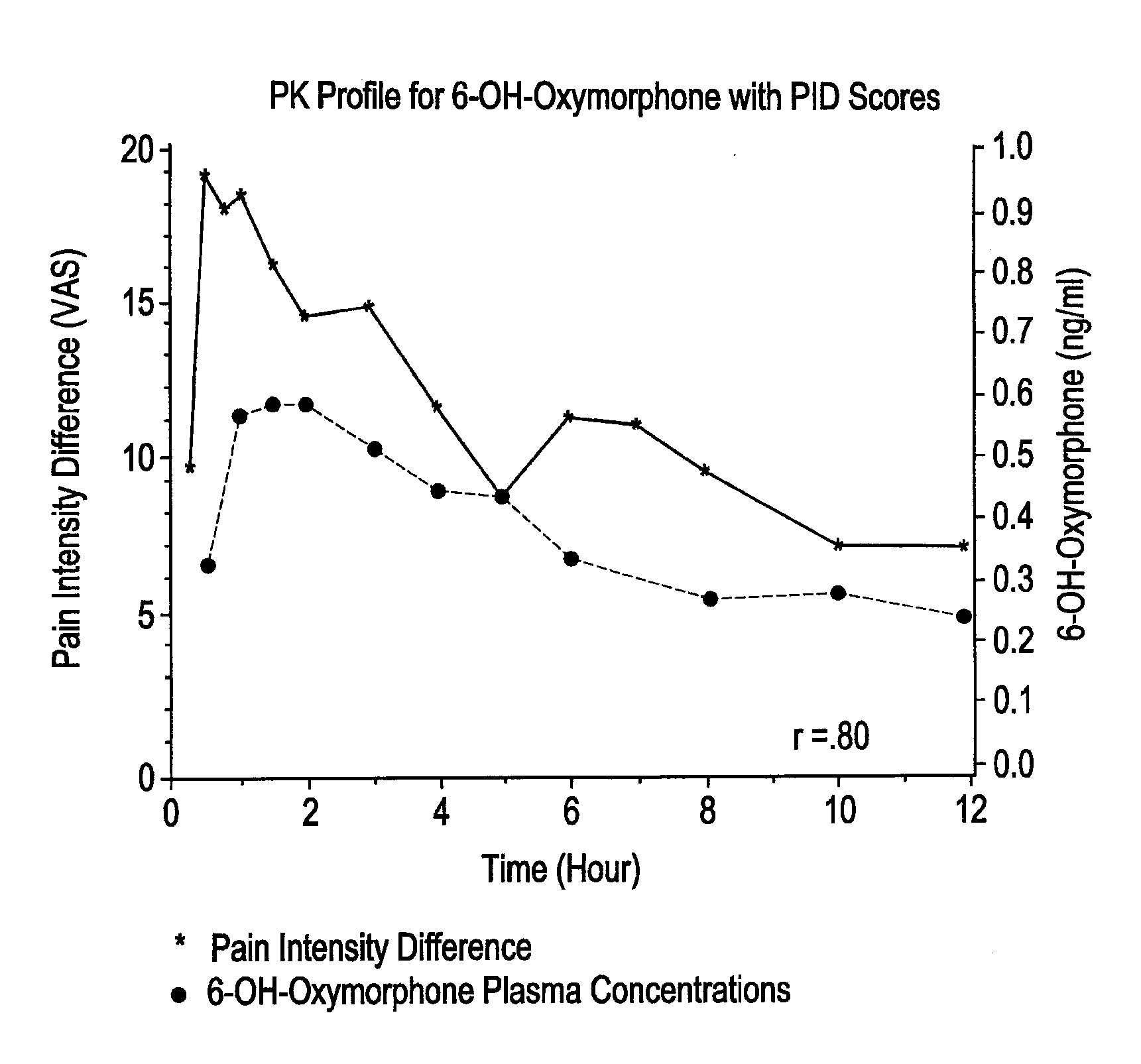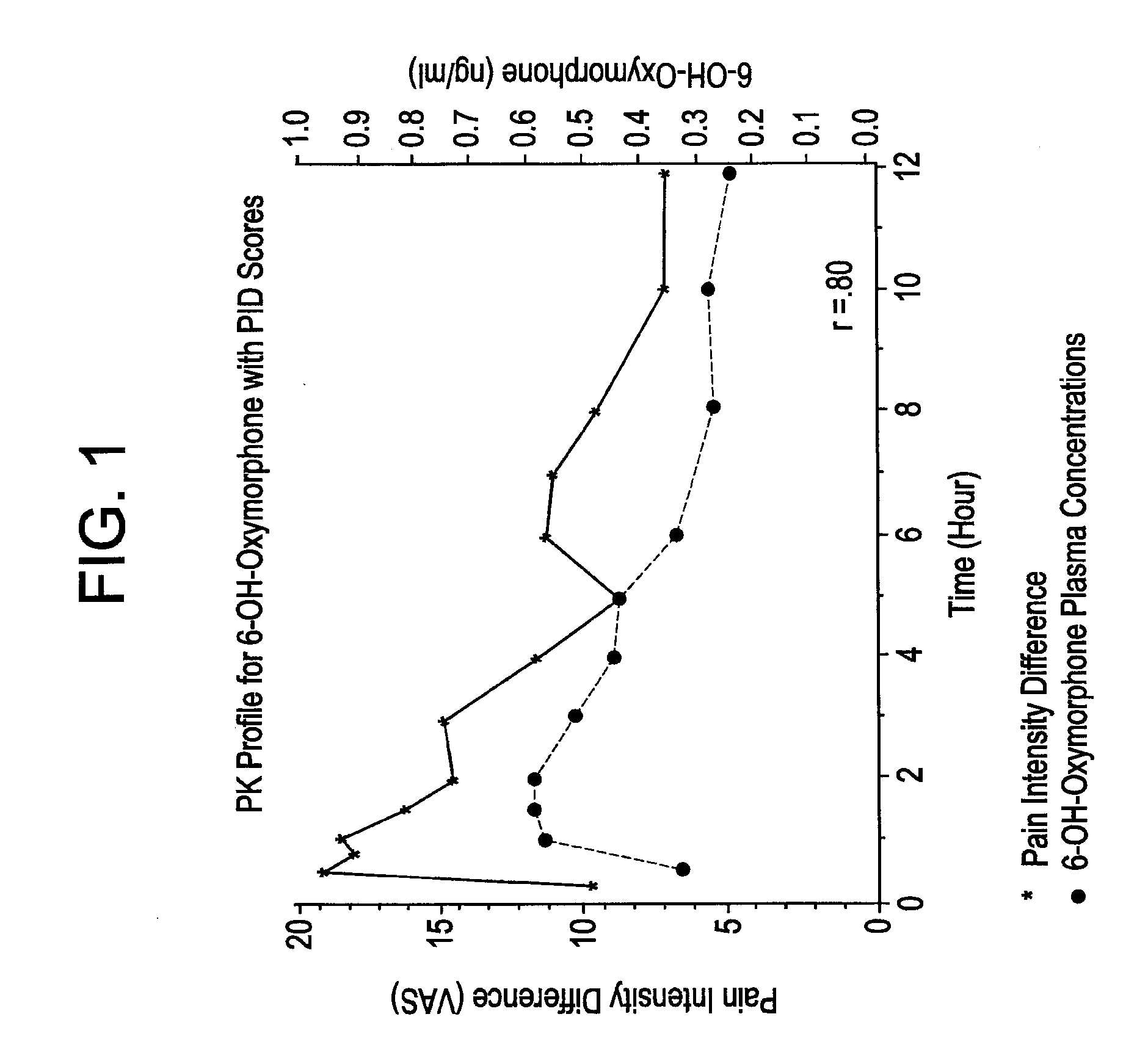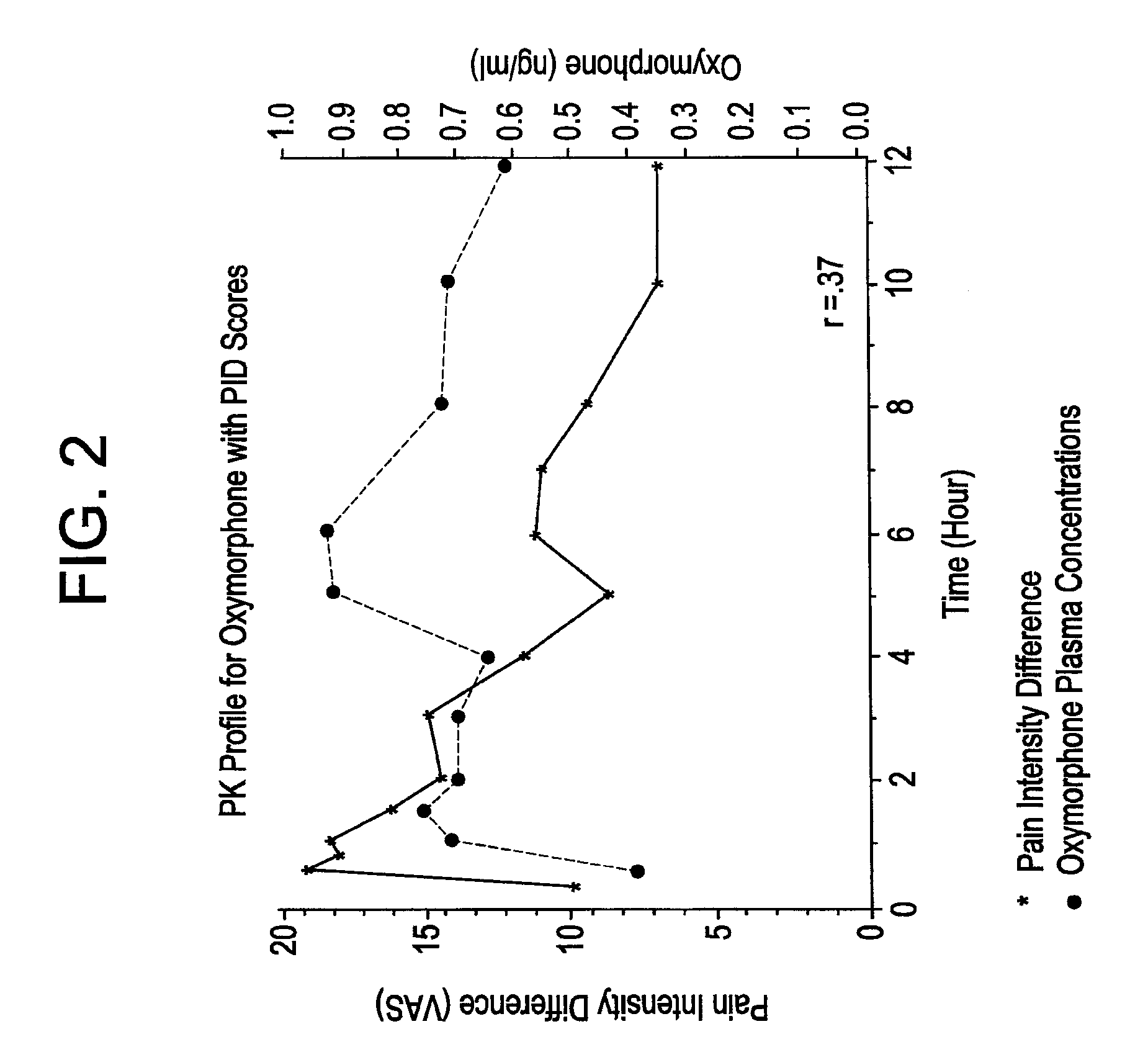Method of Treating Pain Utilizing Controlled Release Oxymorphone Pharmaceutical Compositions and Instruction on Dosing for Hepatic Impairment
a technology of oxymorphone and pharmaceutical compositions, which is applied in the direction of instruments, biocide, heterocyclic compound active ingredients, etc., can solve the problems of chronic undertreatment or inappropriate management, severe pain, and clinicians' confrontation, and achieve the effect of increasing the bioavailability of oxymorphon
- Summary
- Abstract
- Description
- Claims
- Application Information
AI Technical Summary
Benefits of technology
Problems solved by technology
Method used
Image
Examples
example 1
[0071]Two controlled release delivery systems are prepared by dry blending xanthan gum, locust bean gum, calcium sulfate dehydrate, and dextrose in a high speed mixed / granulator for 3 minutes. A slurry is prepared by mixing ethyl cellulose with alcohol. While running choppers / impellers, the slurry is added to the dry blended mixture, and granulated for another 3 minutes. The granulation is then dried to a LOD (loss on drying) of less than about 10% by weight. The granulation is then milled using 20 mesh screen. The relative quantities of the ingredients are listed in the table below.
TABLE 1Cotrolled Release Delivery SystemFormulation 1Formulation 2Excipient(%)(%)Locust Bean Gum, FCC25.030.0Xanthan Gum, NF25.030.0Dextrose, USP35.040.0Calcium Sulfate Dihydrate, NF10.00.0Ethylcellulose, NF5.00.0Alcohol, SD3A (Anhydrous)(10)1(20.0)1Total100.0100.0
[0072]A series of tablets containing different amounts of oxymorphone hydrochloride were prepared using the controlled release delivery Formul...
examples 2 , 3 and 4
Examples 2, 3 and 4
[0073]Two batches of 20 mg tablets were prepared as described above, using the controlled release delivery system of Formulation 1. One batch was formulated to provide relatively fast controlled release, the other batch was formulated to provide relatively slow controlled release. Compositions of the tablets are shown in the following table.
TABLE 3Slow and Fast Release CompositionsExample 2Example 3Example 4IngredientsSlow (mg)Fast (mg)Fast (mg)Oxymorphone HCl, USP202020Controlled Release Delivery System360160160Silicified Microcrystalline Cellulose,202020NFSodium stearyl fumarate, NF422Total weight404202202Coating (color or clear)12129
[0074]The tablets of Examples 2, 3, and 4 were tested for in vitro release rate according to USP Procedure Drug Release U.S. Pat. No. 23. Release rate is a critical variable in attempting to control the blood plasma levels of oxymorphone and 6-hydroxyoxymorphone in a patient. Results are shown in the following Table 4.
TABLE 4Release...
example 5
[0140]Introduction
[0141]Oxymorphone HCl is highly metabolized principally in the liver and undergoes conjugation with glucuronic acid to form both active and inactive products. Cone et al. reported on the urinary metabolites of oxymorphone following administration of a 10 mg oral dose in 10 healthy subjects. The concentrations of oxymorphone and 6-OH-oxymorphone were measured before and after hydrolysis of the urine. On average, 49% of the administered dose was recovered in the urine over a 120-hour collection interval. The majority of the recovery (˜42% of the dose, 82% of the amount recovered) occurred in the first 24 hours. Very little unchanged oxymorphone was recovered in the urine (1.9%, range 0.3% to 0.5%). Conjugated oxymorphone accounted for an average of 44.1% (range 27.2% to 63.1%) of the administered dose. Urinary recovery of the 6-OH metabolite accounted for approximately 3% of the dose (˜0.3% free and 2.6% conjugated). The identity, with respect to type (e.g., glucuron...
PUM
| Property | Measurement | Unit |
|---|---|---|
| pH | aaaaa | aaaaa |
| length | aaaaa | aaaaa |
| time | aaaaa | aaaaa |
Abstract
Description
Claims
Application Information
 Login to View More
Login to View More - R&D
- Intellectual Property
- Life Sciences
- Materials
- Tech Scout
- Unparalleled Data Quality
- Higher Quality Content
- 60% Fewer Hallucinations
Browse by: Latest US Patents, China's latest patents, Technical Efficacy Thesaurus, Application Domain, Technology Topic, Popular Technical Reports.
© 2025 PatSnap. All rights reserved.Legal|Privacy policy|Modern Slavery Act Transparency Statement|Sitemap|About US| Contact US: help@patsnap.com



